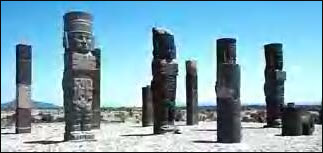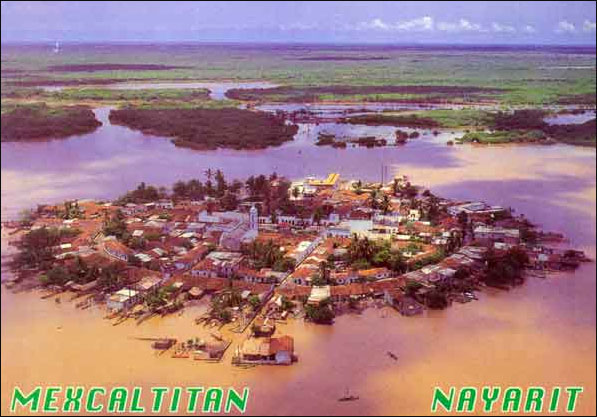

By Gene D. Matlock
"The Language of a Mighty People Is the Greatest History."
Of all the frequently told myths and legends on earth, the story of ancient Atlantis has never ceased to be popular. Speculation continues, especially as to where it was located. Every place on earth -- even Outer Space-has become a candidate. In this article, you'll learn that there was not just one Atlantis in ancient Mexico, but many Atlantises. All of them were and still are in Mexico. But one of them once sank under the waters of the Caribbean Ocean, just off the coast of Southern Veracruz and Yucatan. Which one of all these Atlantises was the real Atlantis? What was its real name?
In Timaeus (24), Plato clearly pinpointed the location of the real Atlantis. I'm amazed that everyone would think it did not exist in the Americas. Plato said, "This power came out of the Atlantic Ocean, for in those days the Atlantic was navigable; and there was an island situated in front of the straits which are by you called the Pillars of Heracles; the island was larger than Libya and Asia put together, and was the way to other islands, and from these you might pass to the whole of the opposite continent which surrounded the true ocean; for this sea which is within the Straits of Heracles is only a harbor, having a narrow entrance, but that other is a real sea, and the surrounding land may be most truly called a boundless continent." Libya was the Greek name for the whole of Africa. Both Americas are greater in size than Africa and Asia combined. This "opposite continent" is certainly opposite Africa.
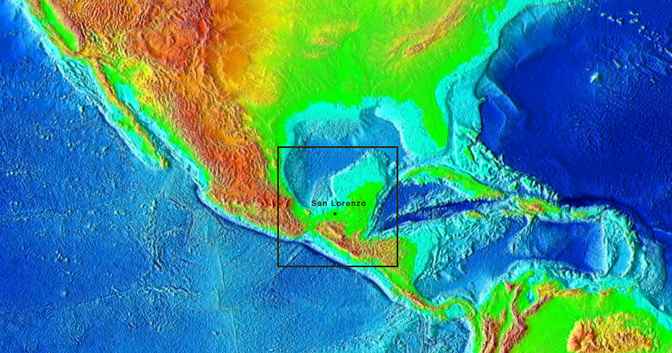 [Fig. 1. : Should we continue our fun guessing games about the region known in Mexico as Atlantis, but which WAS NOT its name, for another few milleniums? Or should we confidently begin our search for the submerged so-called "Atlantis" lying near Mexico's southeast coast? Will the ruins that we'll surely find be those of the real "Atlantis?"] Before the eastern part of Mexico became the bottom of what are now at least part of the Gulf of Mexico and the Caribbean sea, the present narrow strip of swamps and the river Chimalapán connecting Southern Veracruz and Oaxaca, the Isthmus of Tehuantepec, was a wide waterway uniting the Gulf of Mexico with the Pacific. About four thousand years ago, sailing vessels could and did easily cross from the east coast of Mexico to the Pacific in a few hours. The Greek historian Seculus said that the Carthaginian Phoenicians possessed a large and rich island on the Atlantic Ocean. It was called Al Atlantis. According to him, the Phoenicians found it accidentally when some of their ships became lost and were carried to the island by the Atlantic currents. He also stated that the Phoenicians kept their trade route to this island a secret. Plutarch (2 AD) wrote that both the Phoenicians and the Greeks had visited this island which was "on the west side of the Atlantic." They even intermarried with the native-American women. From the time of the Spanish conquest, the people of Mexico have dreamed of widening the Chimalapán (Sheemala-PAN) River, reconnecting the two coasts. Panama lies farther to the south of the Isthmus of Tehuantepec. Its name also derives from Sanskrit: Pana-Maha (The Great Crossing). The Sanskrit word "Pani" refers to merchants who traffic in trade goods, going from one place to another. In Nahuatl, Pan or Opan means "traveling from one side or place to another." This word "Pan," which we inherited from the Phoenicians, became part of the respective vocabularies of nearly every nation on earth. Example: Panamerica (all over America); Pandemic (an outbreak or ailment extending all over a certain country or region), etc. The pre-conquest Meso-Americans claimed that their primordial founding city was Tollán or Tula. The ancient Toltec ruins of Tula, Hidalgo, Mexico, on which the Mayan city of Chichén Itzá was modeled, is also Tollán.
Ancient India, or what we now call the Indian subcontinent, was once sandwiched between two much larger nations. On the North side was Tannu-Tuva, the land of the ancient Turks (Turanians, Tulanians, Krishtayas or Kurus). On the south was a nation larger than both of them: Lanka or Ceylon). 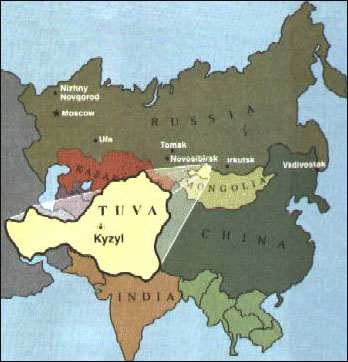 [Figure 3. Map of Tannu-Tuva.] At the time of our Noah, a great flood inundated the tiny Turkish region of Tannu-Tuva called Altai, plus other regions of Tannu-Tuva (today's greatly reduced Tannu-Tuva and Khakhassia). This flood forced the Aryans or Kurus to migrate deep into India, uniting themselves with the Ramanaka or Indian people already there, eventually turning the entire Eastern Hemisphere into a single nation called India. Later, with the Hindus called Dravidians (Tamils, Malayam, etc.), they explored and settled the Americas and every other place, even naming these previously unknown lands.  [Figure 4. The ancient names of the Americas, according to Indian historian Akshoy Kumar Majumdar, author of The Hindu History.] The Hindus called North America Pushkara (Land of Great Lakes, such as those between Canada and the USA). South America was Kusa Dvipa (Land of Fine Grasses-the Argentine and Chilean Pampas Grasslands). Both Americas resembled an eagle's (the Hindu Garuda's) outstretched wings. Therefore, they were called Vishnu Kranta. When the Kubera (Naga) sailing people arrived in the Americas, they also named North America "Quivira" (land of Kubera, Kheevera, or Heber).(See Father Gregorio's El Orígen de Los Indios). The Eastern Hemisphere was called Tala or Talan, (The Upper World). The Western hemisphere was Atala or Atalan (The Lower World). Tala meant "above the surface." Atala meant "on, by, near, or below the surface." The English word Atoll, a low island at nearly sea level, derives from Atala. Atala eventually became the Nahuatl word for water: Atl. Any settlement on, by, on, or near water, the ancient Nahuas called ATLANTECH or ATLANTESH, meaning "A place located by, on, near or under water." Angel María Garibay, in his book Llave del Nahuatl (Key to Nahuatl) lists TECH as a "locative." (See p. 70.) Therefore, all Mexican towns and settlements located by rivers, lakes and seashores, on islands on rivers, lakes, and oceans, became Atlanteshes. For example, the following names for Mexican cities and towns show that they were or are by, on or near bodies of water: San Pedro Aztatlán, Atlán, Mazatlán, Cihuatlán, Cacatlán, Tihuatlán, and the like.  [Figure 5. The coastal Atlantesh of Mazatlán, Sinaloa.] What if people traveling to or discussing settlements by, on, or near bodies of water didn't know the names of such settlements? In such cases, they would just say they were discussing or traveling to an "Atlantesh" (place by, on, near, or just over water). Although "Atlantesh" indicated a settlement's proximity to bodies of water, other "Atlanteshes" did not necessarily indicate this, such as the strange canalled island town of Mexcaltitán in the marshlands off the coast of Nayarit; Janitzio, a town on an island in the center of Lake Patzucaro, Michoacán; the flower gardens and town of Xochimilco, near Mexico City. 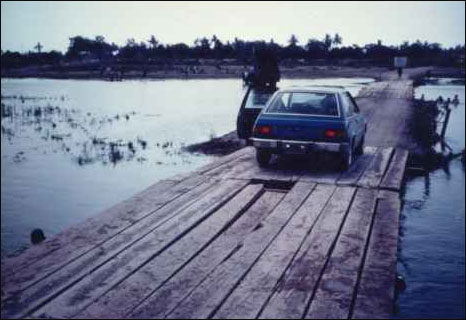
[ABOVE: Gene Matlock's car on a bridge leading through the mangrove swamps, leading to Mexcaltitán.]
[ABOVE: Mexcaltitán.] The Mexicans revere this island as the place they left on their Odyssey to the Valley of Mexico, where they built their Atlantesh called Tenochtitlan (now Mexico City). Notice that the circular shape and canal streets of Mexcaltitán are nearly exactly like Plato's description of the particular "Atlantesh" for which we are searching. Many patriotic Mexicans want to be buried just off the shores of Mexcaltitán, near the present day coastal village of San Pedro Aztatlán, which most people erroneously call "Aztlán," In Sanskrit, Aztatlán means "Place by the water where the sun sets in the west." However, in Nahuatl it means "Place of Many Herons."
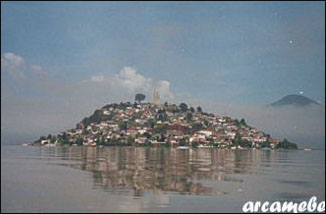 [FIGURE 8. THE ATLANTESH OF JANITZIO, A VILLAGE LOCATED IN THE MIDDLE OF Lake Patzcuaro, Michoacán.] The residents of Janitzio and even some archeologists claim that ancient ruins lie under the part of the lake surrounding the island. 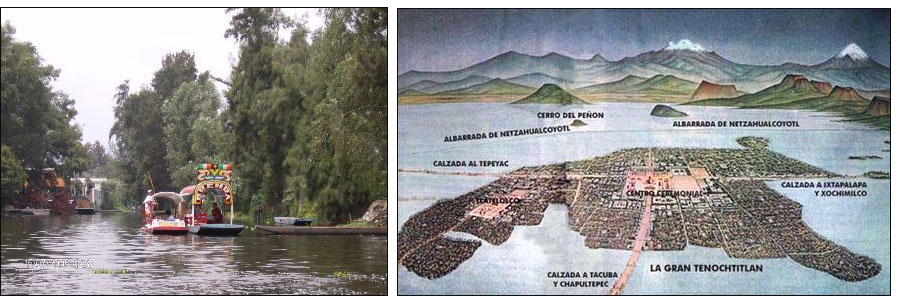
[LEFT: THE ATLANTESH OF XOCHIMILCO, NEAR MEXICO CITY.]
[RIGHT: THE ATLANTESH OF TENOCHTITLAN (ANCIENT MEXICO CITY AS IT APPEARED BEFORE THE SPANIARDS CONQUERED IT.] I learned about Atlanteshes and San Pedro Aztatlán from some of Mexico's foremost archeologists. However, Mexican political activists in the USA say that the ancient Mexicans were entirely incorrect about the true location of Aztatlán, which they erroneously call "Aztlán." They insist that Aztlán is really the dry deserts of Southern California and Arizona, having absolutely nothing to do with bodies of water. We frequently see the names of Mexican cities and settlements ending in TLAN minus the prefix A. These can be either near or far from water, such as Minatitlán, Ocotlán, Tecaltitlán, Tepatitlán, Texiutlán, etc. Additionally, just as a name of a settlement near a body of water doesn't need to end in ATLAN, neither must a settlement named without reference to water end in TLAN, such as Guadalajara, Laredo, Monterrey, and Acapulco. I have mentioned the name of the once large nation of Tannu-Tuva. Tannu is derived from the Sanskrit word Danu, meaning "conqueror." Later in history, the empire of Tannu-Tuva fragmented into many small nations. The Tannu or Danu word came to be a suffix of Turkish nations, often preceded by "S'" or "Su," meaning "Great; Superior": Kyrgistan, Afghanistan, Tajikstan, Pakistan, Kurustan (Turkey), Turkestan, Sudan, etc. Sometimes the S' was omitted, such as with Bhutan and Multan These short suffixes, such as Dan, Tan, Ten, etc., help us trace the ancient conquerors of the world to the Turkish nations and India. The Danu, known biblically as the tribe of Dan, spread out to the countries of the world, leaving their linguistic tracks wherever they went. In Mexico and Meso-America we remember them in the names of Yucatán, Juchitán, Champotón, Celestún, Lacandón, Comitán, and many others. The country now called Mexico originally did not have that name. It is named after the Mexica (Meshika) a.k.a., Aztatecas (Western People), a highly civilized but also bloodthirsty, cannibalistic, and bellicose tribe that once lived in Mexico's altiplano, in and around what is now Mexico City, about 100 miles in each direction. All the non-Meshika tribes, from Central America to our own American southwest, feared and hated them. It has been wrongly said that the Spaniards conquered the Mexicans. The non-Meshikas conquered ancient Mexico, using the Spaniards as advisors and leaders. This negative legacy still exists among Mexico's non-Meshika indigenous peoples who bitterly oppose being called mexicanos, even infecting the mestizo and white citizens inhabiting the various regions of this badly divided but fascinating and enigmatic country. Many members of the Totanaca tribe of Veracruz have told me that their ambition is to separate from Mexico and become again an autonomous nation. It angers them when the Mexicans call their "Pocahontas" Marina, who helped the Spaniards in the conquest, a Mexican. Marina was a Totonac; not a Mexican. It is a curious anomaly that they Aztatecas were also Aztecas. Aztika is the Sanskrit name for "religious people" or those who follow the Hindu Vedas (holy books). The Aztatecas were truly "People of Water." Wherever they went in their peregrination toward what is now Mexico City, they built their homes in the middle of swamps, rivers, and lakes. Brilliant hydrologists, they conquered these wet lands by building dams when necessary, converting them to floating gardens (chinampas), made of rafts covered with dirt and fastened to posts driven into the bottom of the swamp or shallow body of water. The beautiful floating gardens in what is now the internationally known "Atlantesh" of Xochimilco, match, in beauty and productiveness, Plato's description of Atlantis' farmlands. Only in what are now Kashmir and Burma did people make use of swamp-farming as efficiently and extensively as did the Aztatecas. Since the Aztatecas (as a people) or Aztecas (Aztikas or religionists) claimed to have come from some northeastern region covered with swamps, the Spanish padres intuited that they probably originated in the Florida Cays or Everglades. In his book, Hindu America, India-Indian author Chaman Lal states: "At present, we are studying the native tongues and find that at least as far as Nahuatl, Zapoteca, and Maya languages are concerned, they are of Indo-European (Turkish and Sanskrit) origin."
The aforementioned studies are by Dr. Magaña Peón and Professor Humberto J. Comyn, both members of the Geographical Society of Mexico. (p. 14.) In the 1970s, a Mexican engineer, Eduardo Robles y Gutiérrez, published his book, La Atlántida Está en México (Editorial Diana, Mexico City). While working in Veracruz, he discovered the foundations of an ancient "Atlantesh" about 30 miles inland from the coast, in what is now the jungle-covered region of San Lorenzo Tenochtitlan. Through research, he learned that magnificent abandoned buildings of fine stone blocks, all containing precious stones and idols, had once rested on the foundations of San Lorenzo. However, the Spaniards removed the treasures from these ruins and tore down the buildings, sending both the stone blocks and the treasures to Spain. An ancient spiral-shaped harbor with high banks or dikes lining the channels had once existed near San Lorenzo Tenochtitlán, exactly as described by Plato. Robles y Gutiérrez said that the extremely fertile plain and jungles in the region are criss-crossed with the ruins of many ancient irrigation canals, as well as the manmade irrigation lagoons, some with the masonry lining their banks-still intact-and still potentially usable! The archeological remains in San Lorenzo supposedly belong to the Olmec or Olman culture. The words Ulmak and Ulman are the Turkish words for our biblical Adam. The Turkic word Adam just means "man." 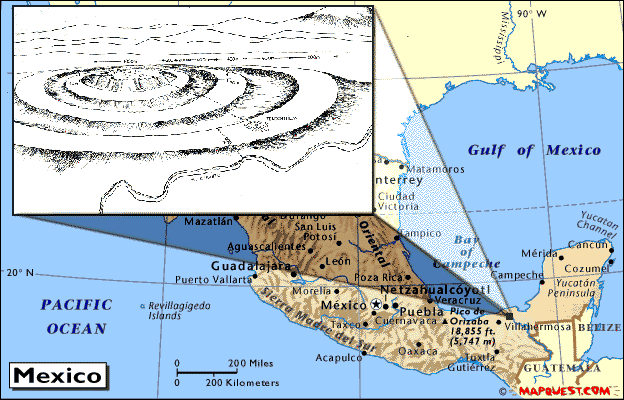 [ABOVE: An ancient, spiral-shaped harbor with high banks or dikes lining the channels had once existed near San Lorenzo Tenochtitlán, exactly as described by Plato. Robles y Gutiérrez said that the extremely fertile plains and jungles in the area are cross-crossed with the ruins of many ancient irrigation canals, as well as manmade irrigation lagoons, some with the masonry lining their banks still intact - and still potentially usable! The archeological remains in San Lorenzo supposedly belong to the Olmec culture. The Olmecs themselves were either survivors of the Atlantis disaster or latecomers to the area.] 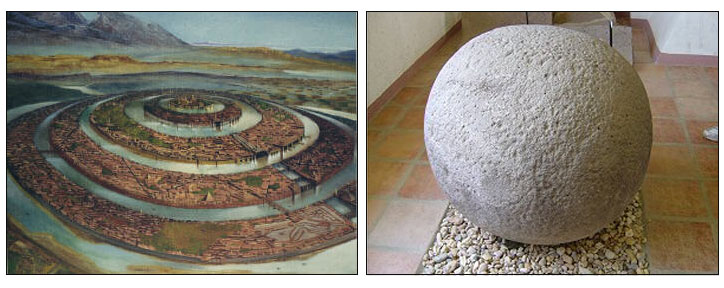
[LEFT: ARTIST'S CONCEPT OF WHAT THE 'ATLANTESH' OF SAN LORENZO TENOCHTITLAN ONCE LOOKED LIKE.]
[RIGHT: STONE SPHERES ARE ALSO FOUND IN THE AREA.] Some mysterious submerged ruins have been found off the coast of the Caribbean island of Bimini. Strange ruins have also been found off the western coast of Cuba. By now, you must have intuited that there never was a place named "Atlantis" because "Atlantesh" just means "a place by, near, on, water," etc. Evidently, the person(s) who told Egyptians the story about this fabulous sunken city did not know its name. All they knew was the Nahuatl word "Atlantesh" (place by, near, on water, etc.). In El Orígen de los Indios, Father Gregorio Perez wrote that the Aztatecas called the Atlantic Ocean, Atlantona ("Splendidly Radiant Lady of the Waters.") Their name for Atlas was Atlante. The roofs of temples represented the Upper World or Talan. The idol columns holding up the temple roofs were Atlantes. (See Figure 2.) When Plato's story passed down to us, we became brainwashed in this error to such an extent that the Atlantis story has become a type of religion in which anyone saying "Atlantis" by that name never existed is branded as a liar and heretic! It was this type of brainwashing which led me to conclude that all of Mexico was named "Atlantis" as I said in my prior Viewzone article about Atlantis and in my book, The Last Atlantis Book You'll Ever Have to Read. For that reason, I became inspired to update that article. Nevertheless, I am proud of that article and my book. I at least chose the right location of the "Atlantesh" Plato described. I feel that I am at least becoming vindicated for my insistence that Plato's "Atlantesh" existed in some part of Mayaland that sank under water. On Saturday, December 30, 2006, at 6:00 PM EST, National Geographic Channel presented the documentary, "Is it Real? -- Atlantis" [TV-G]. anthropologist George Erikson presented evidence that Atlantis once existed in the Yucatan and in submerged lands off the Yucatan, Bahamas, and Cuban coasts 11,500 years ago when sea levels were about 400 feet lower than today. Erikson presented Plato's argument that civilizations are periodically destroyed, often by the people who inhabit them, and only a few of the unlettered survive to eventually create new civilizations, unaware of the past.(see www.AtlantisinAmerica.com ) Could San Lorenzo Tenochtitlan be the "Atlantesh" described by Plato? Evidently not, for it is above ground. So what is the name of the "Atlantesh" researchers say lies under the sea off the coast of Veracruz and Yucatan? To find out for myself, in August. 1982, my now deceased Mexican wife Consuelo and I followed all the inland "Atlanteshes" in Mexico, starting from the coastal "Atlantesh" of Mexcaltitán. We followed them to what is now Mexico City and then to San Lorenzo Tenochtitlán, Vera Cruz, admitting the glaring truth that most of them fit the description of Plato's unnamed "Atlantesh," Finally, we arrived at the eastern shore of Southern Veracruz. At that time I became convinced that if all the other Atlanteshes we visited since leaving coastal Mexcaltitán resembled Plato's 'Atlantesh,' I had no choice but to conclude that the remains of a city beyond San Lorenzo Tenochtitlan may lie somewhere under water. Are all these Atlanteshes resembling Plato's description just a quaint coincidence? What is the name of that "Atlantesh?" For that answer we must study the books of the Hindus. India's Mt. Meru was the highest of two smaller peaks existing beside it. In Sanskrit, the word Trikuta means "Three Peaks." There are two known Trikutas in India. One is in Jammu, next to Kashmir. The other Trikuta is in Ceylon. According to the stories of Kubera, Hindu god of gold and treasure (Kheever or our biblical Heber) and his Yakshi or Yakhu subjects, all of whom were Nagas, exiled a number of North and South Indian tribes, including the Mayans of Ceylon, to Mexico (Patala). After that, they settled on an island called Trikuta off the coast of Yucatán and Veracruz. Later, some violent natural catastrophe caused Trikuta to sink below the sea. However, a large peak, existing between San Lorenzo Tenochtitlán and wherever Trikuta sank, was too high to sink below the water. We know it today as Mt. Orizaba. The Olmecs called it Citlalteptl ("Mountain of the Stars"). It is the third largest peak in North America. 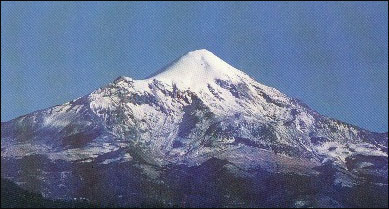 [Mt. Orizaba] Their must be some truth to the legends, for the old Turkish Piri Reis map shows large islands off the coast of Yucatan. Read the Viewzone article about the Piri Reis map. The Mayans remembered this catastrophe in their worship and fear of Huracan, god of fire and strong winds. The Mayans have always had a fear of cyclonic activity in their region. Also, geologists have long suspected that a fearsome tsunami or super-hurricane once flattened Yucatan. It is possible that a meteorite falling on Trikuta destroyed it, simultaneously sending a super-destructive tsunami across the Yucatan peninsula. Some authorities, who strongly reject the idea that the real "Atlantesh" existed in some sunken part of today's Mexico, mention that Plato said "Atlantis" had elephants. There is a fierce animal in Meso-America with a short trunk, making it look somewhat like an elephant: the tapir. However, a stelai in Copán, Honduras, does show turbaned mahouts riding on an elephant. This elephant may be the Mayans' remembrance that their forefathers came from in country that had elephants: Ceylon. 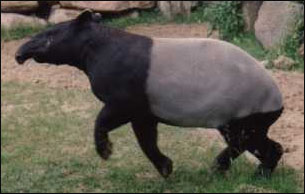 [A tapir.] Should we continue our useless guessing games about the so-called place called "Atlantis" for several more Millenniums? Or should we confidently begin our search for the submerged "Trikuta" Atlantesh lying off the coast of Veracruz and Yucatán? |
